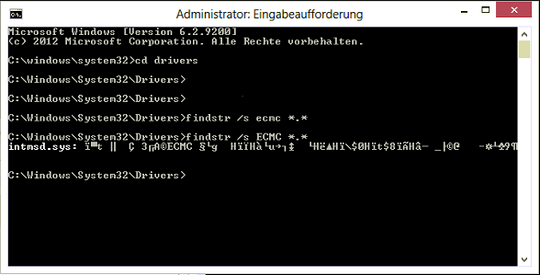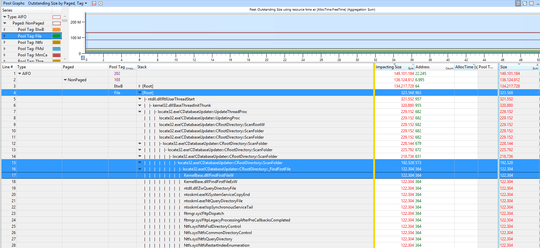2
2
I have a brand new machine with 128GB ram and only Win 7 64 bit OS installed along with relevant hardware drivers etc. There is no other software installed. it has a Samsung 850 Pro EVO SSD as the primary Hard Drive and dual GTX980 in SLI. When I start the computer up it is using 7GB ram leaving me with only 121GB available. All my other machines only use about 2-2.5gb ram at idle.
I need this ram for processing large (120GB) datasets using photogrammetry software and not for making other software start faster (for which none are installed)????!!
I checked all the running process in task manager and it does not add up to 7GB. there simply cant be 7GB of software that need to be loaded in RAM. How do I see what's using this ram and more importantly stop it from using the ram?
Added screen shot of rammap - large nonpaged pooled allocation. how do I get rid of this

Poolmon shows nothing greater than 30MB using nonpool pages. There isn't 5GB of nonpool pages in poolmon. I presume there is no memory leak.
Any other Ideas?




If nothing is actively using it, then it is being used for cache to increase performance. This will be released to applications as needed. – Paul – 2015-11-06T01:36:49.270
1Wow, you actually have 128 gigs. what motherboard is it? – RookieTEC9 – 2015-11-06T02:51:17.773
Post some pictures of RAMMap: http://technet.microsoft.com/en-us/sysinternals/ff700229.aspx
– magicandre1981 – 2015-11-06T05:41:53.360Post some pictures of Task Manager and Resource Monitor. – qasdfdsaq – 2015-11-06T14:29:37.350
Have you sorted it by bytes by pressing B ? if yes, capture a xperf trace, but use this command which includes more memory information: xperf -on BASE+Pool+ReferenceSet -stackwalk PoolAlloc+PoolFree+VirtualAlloc+VirtualFree -buffersize 2048 -MaxFile 2048 -FileMode Circular && timeout -1 && xperf -d C:\trace_pool_alloc.etl – magicandre1981 – 2015-11-07T08:36:44.523
Paul Nov: the mechanism you describe does happen but it does not show up as nonpaged pool. Neither the reactive file cache or the SuperFetch cache use nonpaged pool. – Jamie Hanrahan – 2017-10-13T12:57:05.750